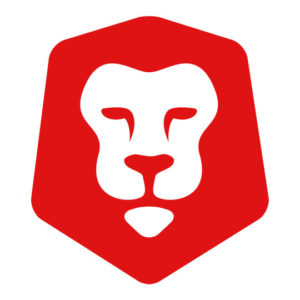Turn Teams Into Collaborative Learning Machines
Peer-to-peer learning is a powerful tool for companies striving to turn their own work environments into learning cultures.
Sure, traditional top-down training checks boxes; it makes it seem like widespread learning has occurred when, in reality, it’s ineffective. Your people have the answers within them already, and by encouraging them to help each other learn, you can promote and sustain a culture of peer-to-peer learning and continuous education.
Enablement includes making room for peers to teach, learn from, and support each other in addition to what we normally think of (training, providing access to coaching, performance support, measuring results, etc.).
Bottom-up methodologies like peer-to-peer learning put the power in employees’ hands to enact change, more effectively approach new solutions together, and form relationships based on a continuous drive to learn from and help one another.
Here are 5 ways to conceptualize the importance of peer-to-peer learning for companies trying to transform into ultimate learning machines.
Sprawling Learning Networks
Universities offer extra help, office hours, teachers’ assistants, group study sessions, and plenty of other resources that exist to encourage students to convene, ask questions, seek different perspectives, and help each other.
Whether you used those resources or not, they were always promoted.
No one forces those students to rely on one professor’s words or forbids them from reading a textbook or talking to classmates about the material.
By tapping into a sprawling network of peers’ and mentors’ knowledge and experiences, learners can deepen their understanding and increase their capacity for problem-solving.
Teams with strong peer-to-peer connections can navigate change more effectively, learn faster, and benefit from the ever-growing bank of tacit knowledge to which they all contribute.

Alina Grubnyak/Unsplash
Enablement is a team sport, and it needs all hands on deck, from leaders to the teams they preside over, to learn from and teach each other.
Offer assistance, and don’t be afraid to reach out for support.
Catering To The Individual
Everyone has their own unique style and pace of learning.
Peer-to-peer learning allows people to seek and find customized instruction that caters to their individual needs. People often learn better from their peers and colleagues through discussion anyway.
Think back to the professor analogy. Perhaps she was a lightning-fast lecturer. No notes, no slide deck, just a stream of words.
Certainly, a portion of students in the class would go home having learned a ton. Others might stare blankly at the empty chalkboard until long after class ends, wondering when the instructional style they need in order to learn would appear.
When peers learn from peers, they’re more capable of articulating the knowledge they’re seeking. Their network enables them to find the right people to transfer knowledge and spark a relationship of learning exchange.
Relationships And Trust
Learning from peers helps to establish and strengthen relationships. The more employees can rely upon one another as messengers of tacit knowledge and as growth agents, the more trust develops.
Networks get larger, ties become stronger, and teams find themselves more comfortable talking to each other, innovating and solving problems together, and even settling disagreements.
This helps to create an environment where people can share struggles openly and have no fear to ask for guidance when needed.

charlesdeluvio/Unsplash
When people recognize their peers’ capabilities as individuals and as members of a collective, the visions of success and company-wide growth become much clearer.
As relationships strengthen and teams become more sociable with each other, individuals achieve more and more access to the growing database of human contacts and the knowledge that connects them.
Practicality
Instead of relying solely on booklets and lectures, why not learn from those who are actually doing the job?
Peer-to-peer opportunities help employees to learn through experience and see firsthand how things are done, asking questions as they go along.
People simply don’t have time for ineffective, cumbersome, or tedious training initiatives. As everyone seems to become more strapped for time, think for a moment about how much time and energy could be saved by having an environment and a system in which people can teach and learn from one another.
We know employees need opportunities to learn through experience (think job rotations, mentorship programs, cohorts, etc.). Peer-to-peer learning is a real, practical experience. It provides real views into how people are tackling similar issues and it instills confidence in people to continue growing, developing, and helping their peers to do the same.
Give your natural teachers the spotlight and let them share in the ways they do best. Give everyone opportunities to teach or simply share successes and best practices; unanimity in willingness to teach is hard to come by, but if you lean on your natural teachers, peer-to-peer learning and experts leading experts will become the norm.
Learning Is A Journey, Not A Destination
While there may be goals and objectives marking the way, the learning journey itself is always unfolding—there is no end point at which we can say we have nothing left to learn.

Matt Duncan/Unsplash
That’s why it’s important for individuals and companies to cultivate a culture of continuous learning where employees feel empowered to grow, develop their skills, and support their peers to do the same.
Peer-to-peer learning isn’t just more effective than traditional training dropped on employees from high above. It’s a more enjoyable process that taps into people’s natural inclination to be curious, to share new information with their network, and to seek and receive knowledge in return.
This ongoing journey of self-development not only benefits individuals in the long term but also enriches the companies they work for as a whole.
Peer-to-peer learning also reinforces the growth mindset: the belief that intelligence and ability are not fixed traits, rather, they can always expand.
Companies must provide their employees with the time, resources, and support they need to continue learning throughout their careers.
Concluding Thoughts
Peer-to-peer learning is an invaluable tool for companies that want to create a more collaborative, productive, and knowledge-rich work environment.
- It gives individuals the agency to pursue the knowledge they know they need to improve.
- It increases the surface area of valued connections among colleagues.
- It bolsters strong relationships and strengthens trust.
- It provides practical, real-world learning scenarios to ensure knowledge retention.
- It is an important piece of the puzzle of constructing a culture of continuous learning.
The benefits of peer-to-peer learning are limitless, and companies would be wise to implement it into their strategy if they want to travel further down the road toward becoming an ultimate learning machine.

Curious Lion Inc.
Curious Lion is not your typical learning company. We’re like a ghostwriter. You stay in the spotlight while we support you behind the scenes with brainstorming, strategy, learning design, and production.
Originally published at curiouslionlearning.com.
